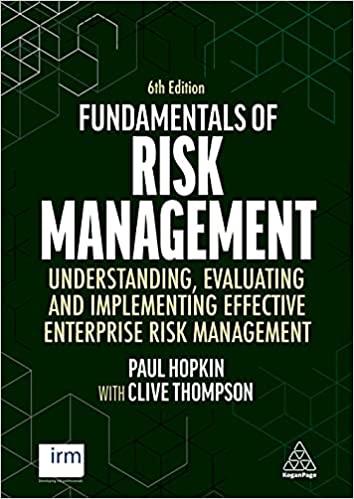Question
1. Please reword/rephrase the following paragraphs. (Please keep them in paragraph form) Augmented reality also known as (AR) is used to enhance customer's perspectives on
1. Please reword/rephrase the following paragraphs. (Please keep them in paragraph form)
Augmented reality also known as (AR) is used to enhance customer's perspectives on issues in the real-world relayed through description and illustration by that of computers. Furthermore, the heartbeat of (AR) consists of smartphones, tablets, laptops, and/or desktop computers. In comparison, Virtual reality (VR) creates a different view of an environment the user engages with. To discuss further, the user must wear a piece of equipment on their eyes or head; the equipment as an additional cost to companies/customers. We will examine such training practices of AR/VR, while comparing the standard training practices we have always known before the technological advances that have developed over the decades. A purpose of both AR and VR is to provide a customer/employee with experience(s) involving situations, products, and equipment (training purposes).
Employees will not be able to train on the equipment because it is being replaced and won't be available for two weeks, so they'll have to rely on AR and VR training instead. At the forefront of AR and VR training are two principles: knowledge and safety. An example would be a pre-med student practicing with tools before performing and operation on a patient.
In addition, AR and VR is frequently used for retraining employees/customers etc., to ensure the safety and accuracy of all procedures executed. Another extremely important utilization of AR/VR are situational (on the job readiness courses) classes provided to employees to prepare them for conflict, violent, extremely emotional situations and how to appropriately react to them before experiencing them in real-time. Employers have developed tools such as QR codes, which they are triggered when scanned by a camera of a smartphone, such as an iPhone populated the screen with addition training manuals and other helpful resources. AR/VR technology enhances the human experience during training and development by assisting in developing technical skills. For example, in the construction industry two groups were studied: one used VR simulations and the other traditional training methods. After one month, results showed the VR group fared much better with on the-job safety practices in comparison to the other group. Employers also utilize gamification to train/onboard employees. Through gamification employees learn at a much better and quicker rate and demonstrate high success rates.
In addition, the process is now more enjoyable and engaging, and the training duration has been cut in half, saving the company money by reducing the number of training hours. Trainees and workers who are retraining are motivated by incentives; gamification allows employees to create objectives and, when they are achieved, get prizes as a source of motivation to perform better.
With, practicing is paramount in becoming confident and efficient executing skills daily in the workplace, studies show that hands-on-practice is the most effective way for people to retain and replicate what they have experienced in training, in comparison to reading, discussions, lectures, or audio and visual learning presentations.
Thank you so much!
Step by Step Solution
There are 3 Steps involved in it
Step: 1

Get Instant Access to Expert-Tailored Solutions
See step-by-step solutions with expert insights and AI powered tools for academic success
Step: 2

Step: 3

Ace Your Homework with AI
Get the answers you need in no time with our AI-driven, step-by-step assistance
Get Started


